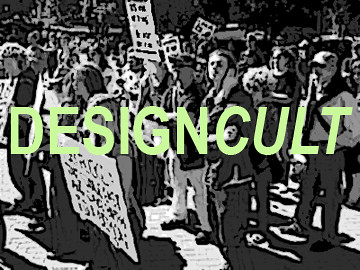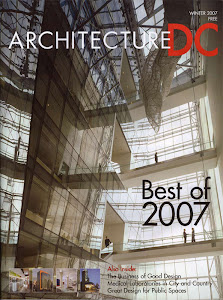Despite Multiple Bites at the 'Apple', Design Still Floundering What happens when modern technology gets put into older, traditional, even historic surroundings? The answer has a lot to do with how well the integration of the old into the new is executed. In some cases the modern interventions adversely affect the existing, such as in old offices and homes where wire mold raceways run along baseboards and up wall surfaces, or in older retail establishments where acoustical ceilings conceal not only ductwork and conduit, but often beautiful tin ceilings. Bad examples of integrating old and new have certainly given rise to a fair number of critics of modern design. Likewise, many methods have been devised at hiding 'unsightly' modern amenities in our homes. However, there are also countless examples where these modern interventions are done well. Certainly when there is thoughtful integration, and the design of the object is as important as the function it performs, then the results are often a pleasing interplay of old and new. This is evident in everyday life, where well-designed objects become more than just functional. They help to transform our surroundings. The glossy kitchen appliance becomes a showpiece in our kitchen and the flatscreen TV no longer need be relegated to a cabinet. Even plumbing fixtures have become design stars in that most basic of functional spaces.
What happens when modern technology gets put into older, traditional, even historic surroundings? The answer has a lot to do with how well the integration of the old into the new is executed. In some cases the modern interventions adversely affect the existing, such as in old offices and homes where wire mold raceways run along baseboards and up wall surfaces, or in older retail establishments where acoustical ceilings conceal not only ductwork and conduit, but often beautiful tin ceilings. Bad examples of integrating old and new have certainly given rise to a fair number of critics of modern design. Likewise, many methods have been devised at hiding 'unsightly' modern amenities in our homes. However, there are also countless examples where these modern interventions are done well. Certainly when there is thoughtful integration, and the design of the object is as important as the function it performs, then the results are often a pleasing interplay of old and new. This is evident in everyday life, where well-designed objects become more than just functional. They help to transform our surroundings. The glossy kitchen appliance becomes a showpiece in our kitchen and the flatscreen TV no longer need be relegated to a cabinet. Even plumbing fixtures have become design stars in that most basic of functional spaces.
Yes, when we accept that advances in technology have manifestations in our daily lives, and further accept that our environments are adaptable to these (provided that the design of these objects is thoughtful and beautifully executed) then the enrichment that these provide is not simply limited to the conveniences they provide, but is also evident in the contribution they offer to our built environment.
If there is one company that understands how to make a design statement out of technology it is Apple. From their release of curvaceous CPUs in an array of bright colors to the most recent iPod, which has become as much accessory as music player, the rest of the industry has had to follow suit. Apple gets that the design of the object can elicit the senses as much as the technology its flashy sheath contains. It is surprising then that the designs for the proposed Apple Store in Georgetown fall so flat. There is, of course, another part of the equation. That being the Old Georgetown Board (with emphasis being placed on 'Old' -- at least as far as the members' interest in design are concerned). Perhaps then we should not have been too surprised to see that the first design presented to the board featured cornice and trim detailing borrowed from the neighbors. Apple's architects, like many a designer working in the District, apparently started with a dumbed down, safe approach, something intended to satisfy the OGB's obsession with historical mimicry. Fortunately, this design did not pass muster with the board. Nor should it have. The board's comments were actually on the money. The openings (especially at the ground floor) are too wide. The proportions are all wrong. The failure of this first design (and a few subsequent iterations) did not occur due to a difference of opinion at the review meetings, but rather on the drafting board. Even without the tacked-on ornamentation, the building proposed fails to acknowledge the existing rhythm of the adjacent facades. Rather than conveying the proportions of its three-story neighbors, the proposed infill places an awkward row of windows at its upper second floor, aligning with nothing. At the entry level, the glass storefront is too much of nothing, and does not jive with the rest of the facade.
There is, of course, another part of the equation. That being the Old Georgetown Board (with emphasis being placed on 'Old' -- at least as far as the members' interest in design are concerned). Perhaps then we should not have been too surprised to see that the first design presented to the board featured cornice and trim detailing borrowed from the neighbors. Apple's architects, like many a designer working in the District, apparently started with a dumbed down, safe approach, something intended to satisfy the OGB's obsession with historical mimicry. Fortunately, this design did not pass muster with the board. Nor should it have. The board's comments were actually on the money. The openings (especially at the ground floor) are too wide. The proportions are all wrong. The failure of this first design (and a few subsequent iterations) did not occur due to a difference of opinion at the review meetings, but rather on the drafting board. Even without the tacked-on ornamentation, the building proposed fails to acknowledge the existing rhythm of the adjacent facades. Rather than conveying the proportions of its three-story neighbors, the proposed infill places an awkward row of windows at its upper second floor, aligning with nothing. At the entry level, the glass storefront is too much of nothing, and does not jive with the rest of the facade.
What Apple and their architects have failed to do is to apply the same rigor given to the design of their products and packaging. Let's start with the basics. Apple is proposing to demolish the existing building on the site fronting Wisconsin Avenue and replace it with a new building. Why then does the rendered design attempt to evoke the past with ill-fitting traditional motif that even the foremost po-mo designer would have considered bad form? This is a new building in historical clothing (and that clothing is a straitjacket!) Something good might have happened, then, after that first meeting. Design concept 2 actually succeeds in a way that designs 1, 3, and 4 never can. Why? Because design concept 2 actually accepts that it is not an old building. It does not do a half-assed job of conforming. Rather, it does what modern interventions into a historic landscape should do. It creates dialogue. At its core, unlike its sibling proposals, concept 2 has the right idea. Unfortunately, this concept is not without its own flaws. Here the integration is lacking completely. There is no apparent attempt to relate the mass to its neighbors. The design is too stubborn for its own good. Rather than rendering a thoughtful dialogue between the old and new, concept 2 is cacophonous and jarring. What is warranted is contextual modernism; what is delivered is apathetic modernism. Unfortunately this concept died a premature death in the OGB's court.
Something good might have happened, then, after that first meeting. Design concept 2 actually succeeds in a way that designs 1, 3, and 4 never can. Why? Because design concept 2 actually accepts that it is not an old building. It does not do a half-assed job of conforming. Rather, it does what modern interventions into a historic landscape should do. It creates dialogue. At its core, unlike its sibling proposals, concept 2 has the right idea. Unfortunately, this concept is not without its own flaws. Here the integration is lacking completely. There is no apparent attempt to relate the mass to its neighbors. The design is too stubborn for its own good. Rather than rendering a thoughtful dialogue between the old and new, concept 2 is cacophonous and jarring. What is warranted is contextual modernism; what is delivered is apathetic modernism. Unfortunately this concept died a premature death in the OGB's court. Concepts 3 and 4, by contrast, are dead on arrival. Concept 3 at least can be credited by attempting to push the limits within the perceived constraints of the historic district, but here branding goes a bit awry, as though an Oldenburg-sized PowerBook has been opened up on the avenue. (It is at once both Venturi's proverbial 'duck' and 'decorated shed'.) As if taking the worst aspects of concept 2, there is no reference to the rhythm of the street (beyond height), and any level of detail is non-existent. Despite even Steve Job's blessing, concept 3 is a dud.
Concepts 3 and 4, by contrast, are dead on arrival. Concept 3 at least can be credited by attempting to push the limits within the perceived constraints of the historic district, but here branding goes a bit awry, as though an Oldenburg-sized PowerBook has been opened up on the avenue. (It is at once both Venturi's proverbial 'duck' and 'decorated shed'.) As if taking the worst aspects of concept 2, there is no reference to the rhythm of the street (beyond height), and any level of detail is non-existent. Despite even Steve Job's blessing, concept 3 is a dud. Regrettably, this has all been followed up by a fourth concept that, were this Microsoft, might be referred to as Concept 1 'Vista'. It seems we have returned to the safe approach, and yet still missed the mark.
Regrettably, this has all been followed up by a fourth concept that, were this Microsoft, might be referred to as Concept 1 'Vista'. It seems we have returned to the safe approach, and yet still missed the mark.
There is one main thing spoiling the bunch. Apple appears clearly perplexed in this situation to do what, in the design of its objects, seems modis operandi: to produce a design where outward appearance is as important as its content while integrating itself into its surroundings. Instead, Apple has tried to blend in via overt reference, in a way that might be characterized by offering iPods in houndstooth or denim patterns, or Macs in woodgrain. The result is a design that is neither Apple or Georgetown. The applique of ornament is too shortsighted to appease anyone. What Apple must do here, as with their products, is to put emphasis on the form and scale of this design. How does it relate to its context? How does it fit into its site? These are fundamental to creating a successful design in any environment, but especially when working within a historic context. The design must walk the line of being thoughtfully progressive and respective of the historic context. Should such a design arise, this will not only work to Apple's advantage by giving them a building that reflects their brand, but will also help to accentuate the nature of this part of the city by refusing to give it what it does not need: another stale, neo-traditional bore.
Update: OGB has rejected the fourth iteration of the design: Washington Post
Thursday, February 5, 2009
Bad to the Core
Labels:
Apple Store,
contextual modernism,
Georgetown,
retail
Subscribe to:
Post Comments (Atom)









No comments:
Post a Comment